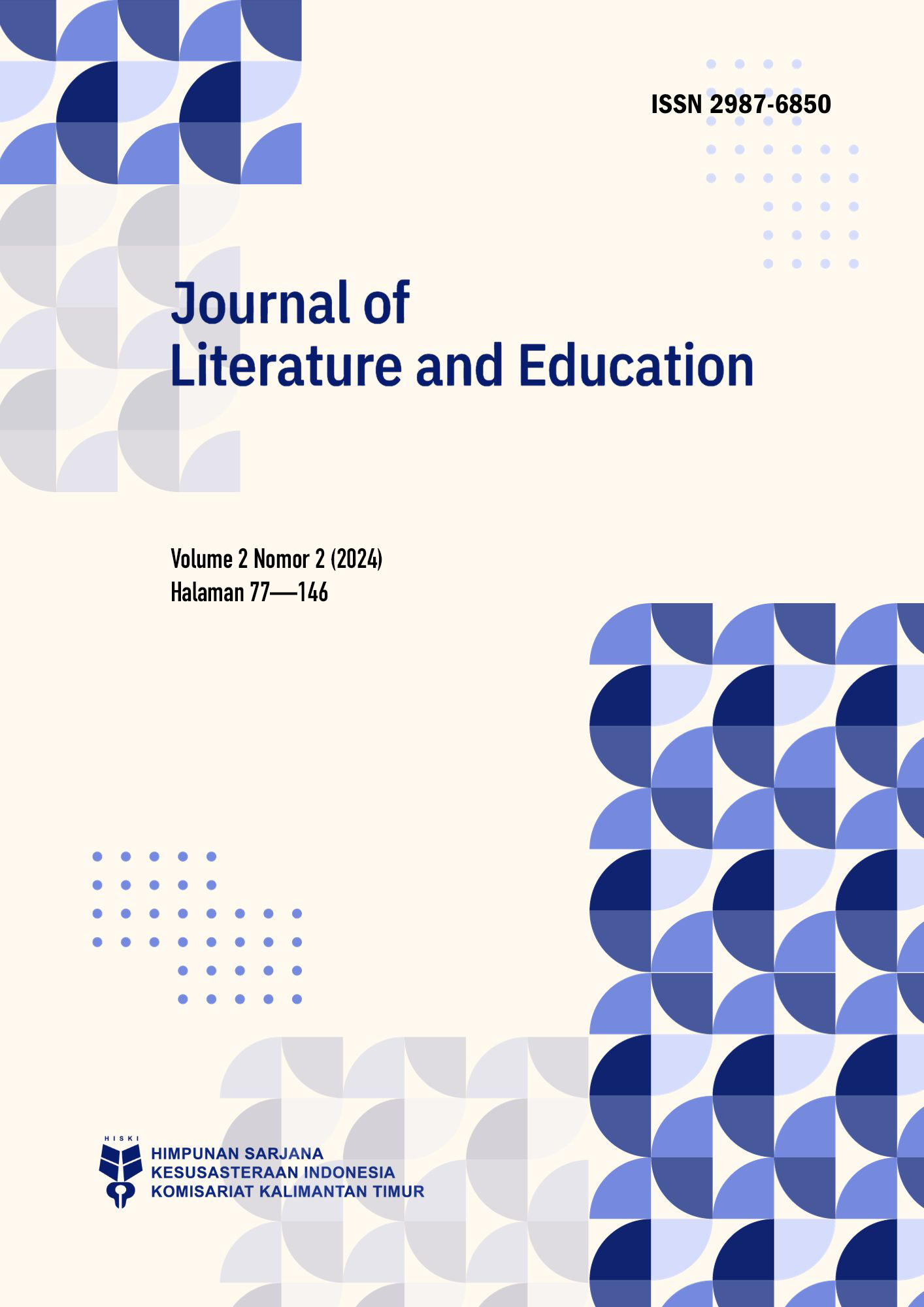Why Communicative Approach Culturally Fails in Indonesia
Main Article Content
Abstract
For decades, the Indonesian government has tried to catch up with the development of English language teaching worldwide. This paper discusses the implementation of the communicative approach (CA) and why it is culturally incompatible in Indonesia. Having done library research, the writers first discuss the status of English language teaching in Indonesia and the development of communicative language teaching (CLT) in the world. The discussion then shifts to cultural issues hindering the implementation of CLT in Indonesia. Here, instead of suggesting major changes, the writers recommend that CLT be culturally adjusted, and English teachers who play an important role in the classroom must be able to tinker with their methods to make them appropriate to the local cultural norms. There is a pressing need to redefine the current teacher-student relationship to keep up with the prevailing cultural norms. The teachers should incorporate more student-centered activities in the classroom.
Article Details

This work is licensed under a Creative Commons Attribution-ShareAlike 4.0 International License.
Under the following terms:
Attribution — You must give appropriate credit, provide a link to the license, and indicate if changes were made. You may do so in any reasonable manner, but not in any way that suggests the licensor endorses you or your use.
ShareAlike — If you remix, transform, or build upon the material, you must distribute your contributions under the same license as the original.
References
Ahmed, A. M., Troudi, S., & Riley, S. (Eds.). (2020). Feedback in L2 English Writing in the Arab World. Springer International Publishing. https://doi.org/10.1007/978-3-030-25830-6
Alrajafi, G. (2021). The use of English in Indonesia: Status and Influence. SIGEH ELT?: Journal of Literature and Linguistics, 1(1), 1–10. https://doi.org/10.36269/sigeh.v1i1.355
Ariatna. (2016). The Need for Maintaining CLT in Indonesia. TESOL Journal, 7(4), 800–822. https://doi.org/10.1002/tesj.246
Bacon, S. (1999). Communicative Language Teaching. Online Encyclopedia of Educational Technology. http://coe.sdsu.edu/eet/articles/comlangteach/index.htm
Bogdan, R. C., & Biklen, S. K. (2007). Qualitative research for education: An introduction to theories and methods (5th ed.). Pearson Education.
Chen, N. (2023). The story of a loner learner: Reconsidering authenticity and authentic engagement in second language learning. Language Teaching, 56(1), 22–28. https://doi.org/10.1017/S0261444822000180
Chotib, M. N., Subiyanto, A., Masduqi, H., & Widodo, H. W. (2023). Finding the Transcendental Beast in Poetic Translations of Chairil Anwar’s Aku. E-Journal of Cultural Studies, 16(3), 23–36. https://ojs.unud.ac.id/index.php/ecs/article/view/100257
Cohen, L., Manion, L., & Morrison, K. (2017). Research Methods (8th ed.). Routledge.
Cui, J. (2022). Applying Communicative Language Teaching in Classroom English Language Lesson Curriculum. Journal of Contemporary Educational Research, 6(11), 48–60. https://doi.org/10.26689/jcer.v6i11.4531
Dardjowidjojo, S. (1997). Cultural Constraints in the Teaching of English in Indonesia. TEFLIN 45th National Conference.
Given, L. M. (2008). The Sage encyclopedia of qualitative research methods. Sage.
G?rsoy, S., & Kunt, N. (2019). Acculturation of university students in Northern Cyprus. Culture & Psychology, 25(2), 146–160. https://doi.org/10.1177/1354067X18808213
Hall, S., Evans, J., & Nixon, S. (Eds.). (2013). Representation: Cultural Representations and Signifying Practices (2nd ed.). Sage Publications.
Harmer, J. (2011). How to teach English. Longman.
Lengkanawati, N. S. (2004). How Learners from Different Cultural Backgrounds Learn a Foreign Language. Asian TEFL Journal, 6(1). https://shorturl.at/A6dy1
Lowenberg, P. H. (1991). English as an additional language in Indonesia. World Englishes, 10(2), 127–138. https://doi.org/10.1111/j.1467-971X.1991.tb00146.x
Mahboob, A., & Elyas, T. (2014). English in the Kingdom of Saudi Arabia. World Englishes, 33(1), 128–142. https://doi.org/10.1111/weng.12073
Masduqi, H. (2024). Personal communication with Dr. Prihananto (25 May 2024) (Personal Interview).
Masduqi, H., Chotib, M. N., & Subiyanto, A. (2023). Language, Society, and Cultural Differences in Representation: The Strange Case of Malangese Boso Walikan. ScienceOpen Preprints, 1–9. https://www.scienceopen.com/hosted-document?doi=10.14293/S2199-1006.1.SOR-.PPZWVJH.v1
Masduqi, H., & Fatimah, F. (2021). Learning vocabulary through games: A critical review. Education of English as Foreign Language, 4(2), 66–70. https://doi.org/10.21776/ub.educafl.2021.004.02.02
Masduqi, H., & Subiyanto, A. (2020). Bilingual education in Indonesia: A call for its reimplementation in the national context. In N. Yannuar, E. L. Zen, Y. Basthomi, & A. N. Wulyani (Eds.), A Festschrift for our Guru A. Effendi Kadarisman (pp. 84–96). Universitas Negeri Malang. http://inggris.sastra.um.ac.id/wp-content/uploads/2021/02/Festschrift-for-our-teacher-Effendi-Kadarisman_to-upload.pdf
McDevitt, B. (2004). Negotiating the syllabus: a win-win situation? ELT Journal, 58(1), 3–9. https://doi.org/10.1093/elt/58.1.3
Musthafa, B. (2001). Communicative language teaching in Indonesia: Issues of theoretical assumptions and challenges in the classroom practice. Journal of Southeast Asian Education, 2, 1–9. https://files.eric.ed.gov/fulltext/ED462833.pdf
NYU Libraries. (2024). Library Research Methods. Theater of the Real. https://guides.nyu.edu/DocumentaryTheatre/research-methods
Prihananto, N., & Masduqi, H. (2021). Communicative Approach in the Five Curricula of English Subject for Secondary Schools: A Paradox in English Language Teaching in Indonesia. In N. Hayati, Suharyadi, S. Andreani, & U. P. Astuti (Eds.), The Changing Face of ELT: A Festschrift for Prof. Ali Saukah and Prof. M. Adnan Latief (pp. 120–134). Universitas Negeri Malang. http://inggris.sastra.um.ac.id/wp-content/uploads/2021/08/The-Changing-Face-of-ELT_A-Festschrift-for-Prof.-Ali-Saukah-and-Prof.-M.-Adnan-Latief.pdf
Richards, J. C., & Rodgers, T. S. (2001). Communicative language teaching. In J. C. Richards & T. S. Rodgers (Eds.), Approaches and Methods in Language Teaching (2nd ed., pp. 153–177). Cambridge University Press. https://doi.org/10.1017/CBO9780511667305.018
Richards, J. C., & Rodgers, T. S. (2014). Approaches and Methods in Language Teaching (3rd ed.). Cambridge University Press. https://doi.org/10.1017/9781009024532
Srinivasulu, G. (2020). The role of communicative language teaching (CLT) in a learner centred classroom. Research Journal of English Language and Literature (RJELAL), 8(S1), 103–105. http://www.rjelal.com/8.S1.2020/103-105.pdf
Sukono. (2004). Is CLT a Thing of the Past?
Whong, M. (2013). A linguistic perspective on communicative language teaching. The Language Learning Journal, 41(1), 115–128. https://doi.org/10.1080/09571736.2011.625097
Zacharias, N. T. (2014). The Relocation of Culture in the Teaching of English as an International Language. In R. Marlina & R. A. Giri (Eds.), The Pedagogy of English as an International Language (pp. 129–141). Springer Cham. https://doi.org/10.1007/978-3-319-06127-6_9

